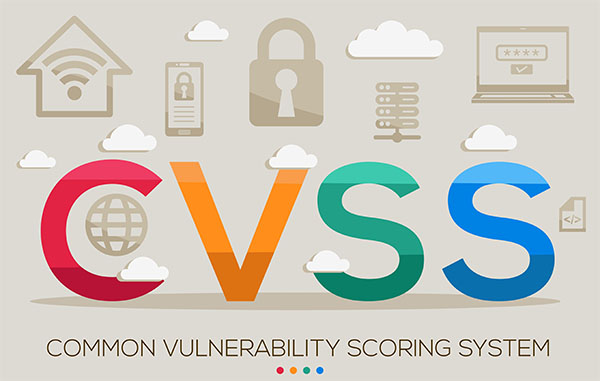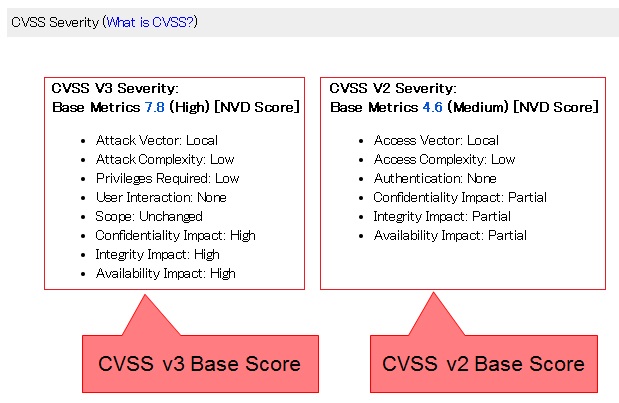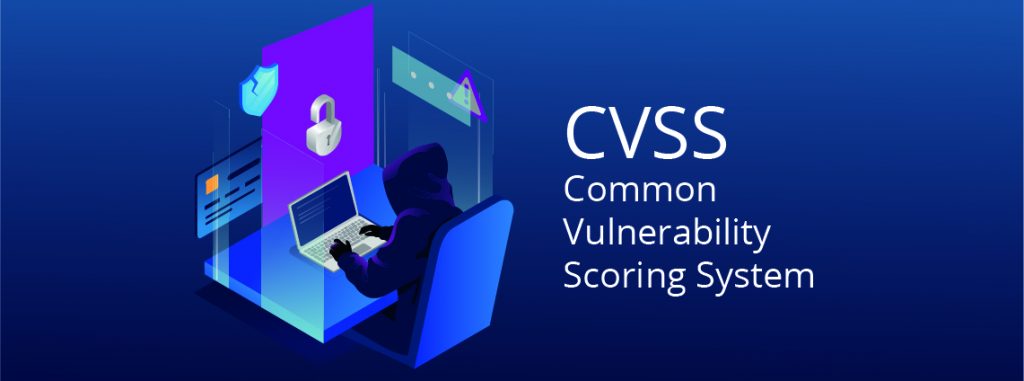I. Introduction to CVSS 4
The Common Vulnerability Scoring System (CVSS) is a crucial industry standard that provides a systematic and consistent methodology to rate and communicate the severity of software vulnerabilities. Learn more about CVSS in this Wikipedia link.
Understanding the Common Vulnerability Scoring System (CVSS)
The primary goal of the CVSS is to:
- Provide Standardization: Allows organizations across different sectors to have a common understanding of a vulnerability’s impact.
- Inform Decision Making: Helps security teams prioritize responses and resources based on threat severity.
Overview of CVSS 4 and its importance
CVSS 4 is the latest update that refines and improves the standards, enabling more precise and accurate vulnerability ratings. Stay updated with the crucial changes and their implications as we delve into these latest developments in the subsequent sections.

II. Key Changes in CVSS 4
As with any new version, the Common Vulnerability Scoring System (CVSS) 4 has come with several updates and improvements that make it more effective at scoring and assessing risks.
Updates and Improvements in CVSS 4
One significant improvement in CVSS 4 is the introduction of ranges in Base scores, ranging from 0.1 to 0.9. This new change allows for a more nuanced representation of vulnerabilities. Addtionally, CVSS 4 has made user interaction metrics mandatory, creating a more accurate representation of the risk involved for the user.
Impact on Vulnerability Scoring and Risk Assessment
CVSS 4’s new scoring ranges and mandatory user interaction metrics provide a more detailed and accurate risk assessment for vulnerabilities. This increased accuracy will help businesses better understand their security landscape and prioritize their defenses accordingly.
Remember, it’s important to be diligent about security updates and risk assessments to stay on top of potential threats. Be sure to review the changes in CVSS 4 to ensure your company is effectively identifying and dealing with vulnerabilities.
 Source: mlg3gcuz7kvc.i.optimole.com
Source: mlg3gcuz7kvc.i.optimole.comIII. CVSS 4 Metrics
In 2023, CVSS 4 made some significant strides, introducing a range of new metrics that further enhance cybersecurity threat assessment. This revised Common Vulnerability Scoring System (CVSS) benefits both tech teams and security practitioners alike with its added tiers of complexity and accuracy.
Exploring the new metrics introduced in CVSS 4
When breaking down the fresh metrics in CVSS 4, it’s crucial to touch on just a few of the key additions:
- New severity rating spectrum
- Enhanced focus on vulnerability types
- Expanded impact metrics
Understanding Base, Temporal, and Environmental scores
The core of CVSS scoring still revolves around its triad of Base, Temporal, and Environmental scores. These highlight the primary characteristics of a vulnerability, the current exploit environment, and the potential impact on an organization’s unique setting. These scores now operate with increased precision, providing users with a more nuanced understanding of their cybersecurity situation.
 Source: cdn-golcf.nitrocdn.com
Source: cdn-golcf.nitrocdn.comIV. CVSS 4 Vulnerability Types
The update to the Common Vulnerability Scoring System (CVSS), version 4, includes new vulnerability types, aiming to better encompass the complex landscape of potential system threats. Let’s dive in and evaluate what these new categories are:
New vulnerability types covered in CVSS 4
In CVSS 4, new vulnerability types have been added to address current and evolving cybersecurity threats. These include:
- Supply Chain Vulnerabilities: These involve risks associated with third-party components or services used in the system’s operation.
- Cyber-Physical vulnerabilities: These pertain to threats dealing with physical infrastructure connected to, or controlled by, information systems.
- Privacy vulnerabilities: These relate to the mishandling of user data, either intentionally or unintentionally.
Examples and scenarios for each vulnerability type
Let’s take a closer look at scenarios for each new type:
- Supply Chain: Suppose a third-party service provider encounters a security breach, compromising the data of all systems using that service.
- Cyber-Physical: An example could be a threat actor gaining unauthorized access to a critical utility system via a software vulnerability.
- Privacy: Consider a situation where an application improperly stores user data, making it vulnerable to unauthorized access.
That closes up this brief yet crucial report on the extended vulnerability categories in CVSS 4. Remember, understanding these classifications will aid in evaluating and minimizing potential risks!
 Source: www.redlings.com
Source: www.redlings.comV. CVSS 4 Scoring Process
Calculating the proper CVSS 4 scores is crucial for understanding the severity of vulnerabilities in your system. Here’s a step-by-step guide:
Step-by-step guide to calculating CVSS 4 scores
- Identify the vulnerability: Understand the vulnerability affecting your system. This includes the software involved and potential impact.
- Choose the right metric group: CVSS 4 has three metric groups – Base, Temporal, and Environmental. The Base group is mandatory, while the others are optional.
- Assign Metrics scores: Each metric in the group(s) has distinct score values. Assign scores based on the severity and your system’s context.
- Calculate the score: Use the CVSS calculator to determine the final scores.
Considerations and best practices for accurate scoring
- Always keep your system context in mind when assigning scores.
- Reassess scores over time as vulnerabilities and system context may change.
- Utilize all three CVSS metric groups for a comprehensive vulnerability assessment.
Remember, accurate CVSS 4 scoring helps formulate effective security strategies for your systems.
Advantages of using CVSS 4 for risk assessment
The Common Vulnerability Scoring System (CVSS) version 4 carries several advantages for risk assessment. It provides a quantitative measure of the severity of vulnerabilities, allows for consistency and repeatability in scoring across different organizations, and helps prioritize response. Furthermore, it now considers user interaction and safety impact in its scoring, making it more suited to today’s complex cyber environment.
Real-world applications and use cases
CVSS 4 has been increasingly gaining traction in various industries. Tech giants like Google and Microsoft utilize it as a foundation in their vulnerability management programs. It is also referenced in cyber risk regulations like the GeneralDataProtectionRegulation (GDPR) to guide how organizations assess and handle their data security.
In summary, the use of CVSS 4 is advantageous for both its robust risk assessment and growing real-world applications.
VII. CVSS 4 Limitations and Challenges
The Common Vulnerability Scoring System (CVSS) 4, despite its enhancements, still has some limitations and challenges. The main issue is that it may not accurately estimate the real-world risk in some scenarios. A high-scoring vulnerability might pose minimal risk, depending on how an organization’s system is configured, and vice versa.
- A score might not take into account situational factors.
- It may overestimate the risk in some cases while underestimating in others.
Suggestions for Overcoming Potential Issues
To overcome these potential issues, it’s best to use CVSS ratings as a guide and also apply personal judgment and context-specific knowledge to make decisions.
- Understand the context and apply situational discretion.
- Don’t overlook vulnerabilities with low CVSS scores.
These steps can help ensure a more comprehensive and accurate understanding of the system’s vulnerabilities.
 Source: jvndb.jvn.jp
Source: jvndb.jvn.jpVIII. Comparison with CVSS 3
When assessing the capabilities of the Common Vulnerability Scoring System (CVSS), it’s vital to compare the updated version, CVSS 4, with its predecessor, CVSS 3.
Differences and similarities between CVSS 3 and CVSS 4
Updating from CVSS 3 to CVSS 4 brought a bunch of changes including:
- More comprehensive scoring: CVSS 4 provides a more nuanced understanding of vulnerabilities, including their potential impacts and exploitation.
- Improved user experience: CVSS 4 offers a user-friendly interface with guided scoring and documented supporting evidence.
But, CVSS 4 still retains several features from CVSS 3:
- Universal applicability: Like its predecessor, CVSS 4 applies to any IT system, product, or service.
- Open standard: CVSS 4 continues to be a free, community-driven standard.
Upgrading from CVSS 3 to CVSS 4
Anyone seeking to upgrade from CVSS 3 to CVSS 4 must consider training and adjusting internal processes to accommodate the revised scoring and reporting mechanisms. Despite this, the benefits of the newer system far outweigh the challenges of transition.IX. CVSS 4 in Security Practices
The Common Vulnerability Scoring System (CVSS) is a valuable tool in cybersecurity. It helps businesses and individuals understand and fight against threats.Within this sphere, the latest iteration, CVSS 4, has proved instrumental.
Incorporating CVSS 4 into vulnerability management processes
CVSS 4 has introduced a host of improved scoring capabilities, with focus on complex threats and their contextual weight. It is hence critical to incorporate this new scoring system into your vulnerability management processes.
Integrating CVSS 4 scores into security tools and frameworks
Besides, integrating CVSS 4 scores into security tools and frameworks significantly enriches your threat insights. Understanding these scores will help organizations strategically defend against, and respond to, potential security threats.
In conclusion, utilizing CVSS 4 in security practices better equips organizations with effective threat management and incident response. Remember, the key purpose of CVSS is to help measure the threat landscape; let CVSS 4 guide you to a safer cyberspace.
XI. Conclusion
As we approach the end of our discussion on CVSS 4, several key takeaways stand out.
Summary of key points discussed about CVSS 4
- The advent of CVSS 4 represents a significant evolution in the realm of vulnerability scoring. With its advanced criteria, it provides a more nuanced and detailed understanding of security vulnerabilities.
- The new version is more precise, allowing users to make better informed decisions on the urgency and priority of vulnerability remediation.
Looking ahead to the future of vulnerability scoring
Looking ahead, we expect that vulnerability scoring systems will continue to evolve in response to the ever-changing cybersecurity landscape. Yet, no matter how the technologies evolve, the end goal remains the same: to help organizations identify, understand, and manage cybersecurity risks effectively.
In the constantly evolving world of cybersecurity, staying up-to-date with the latest tools and systems is paramount. CVSS 4 offer great promise in the effort to stay ahead of threats and maintain a robust security posture.
In conclusion, as its adoption becomes more widespread, CVSS 4 will likely play a crucial role in shaping the future of vulnerability management. Therefore, security professionals need to familiarize themselves with its functionalities and leverage them to enhance their security strategies.




